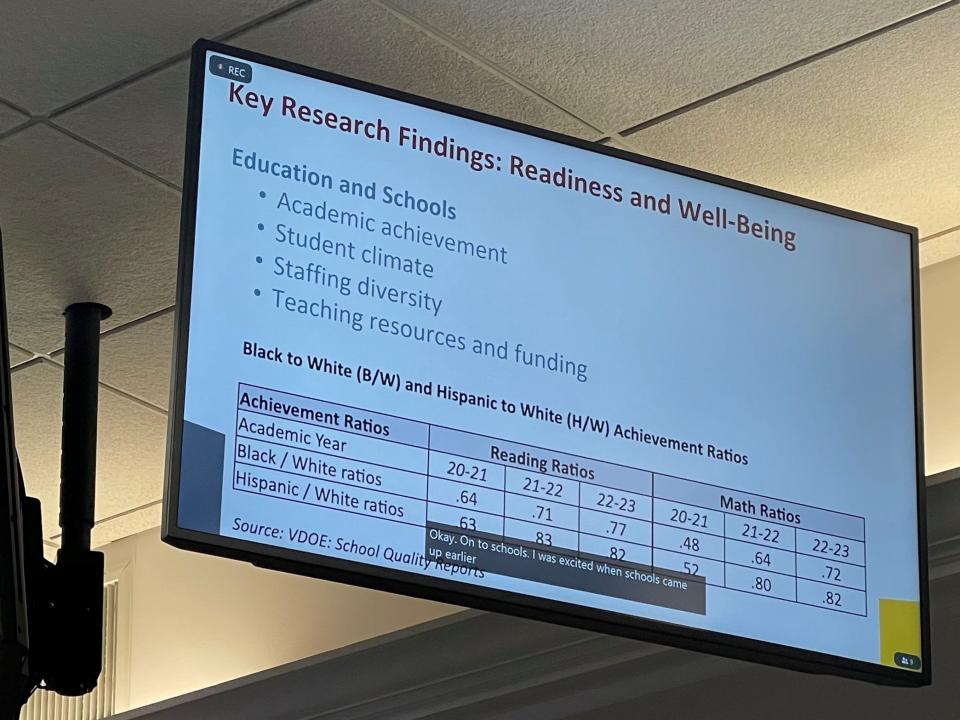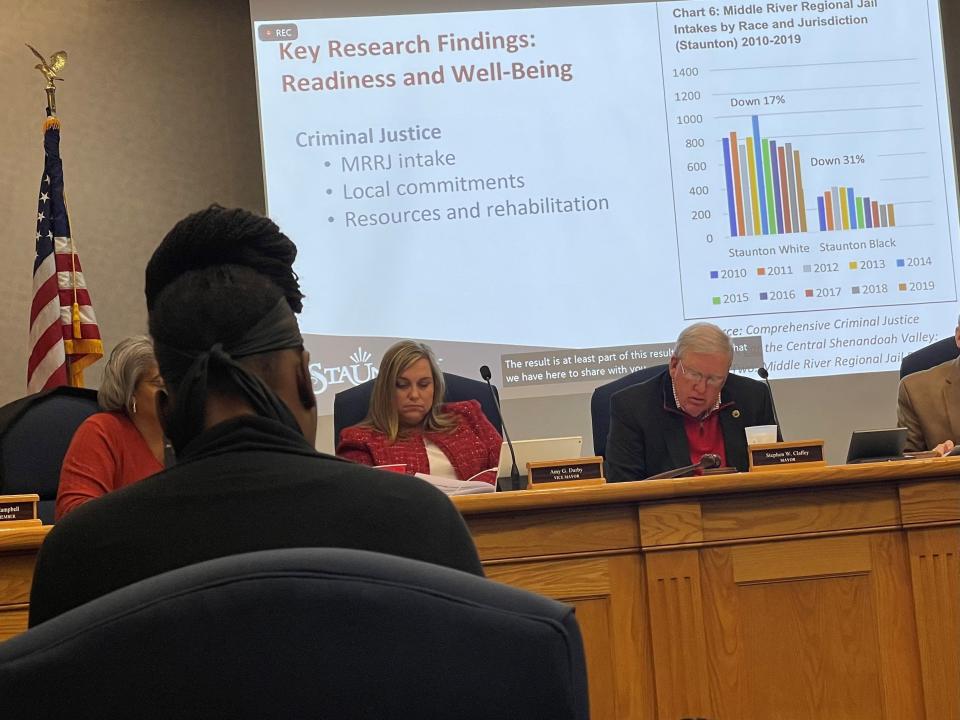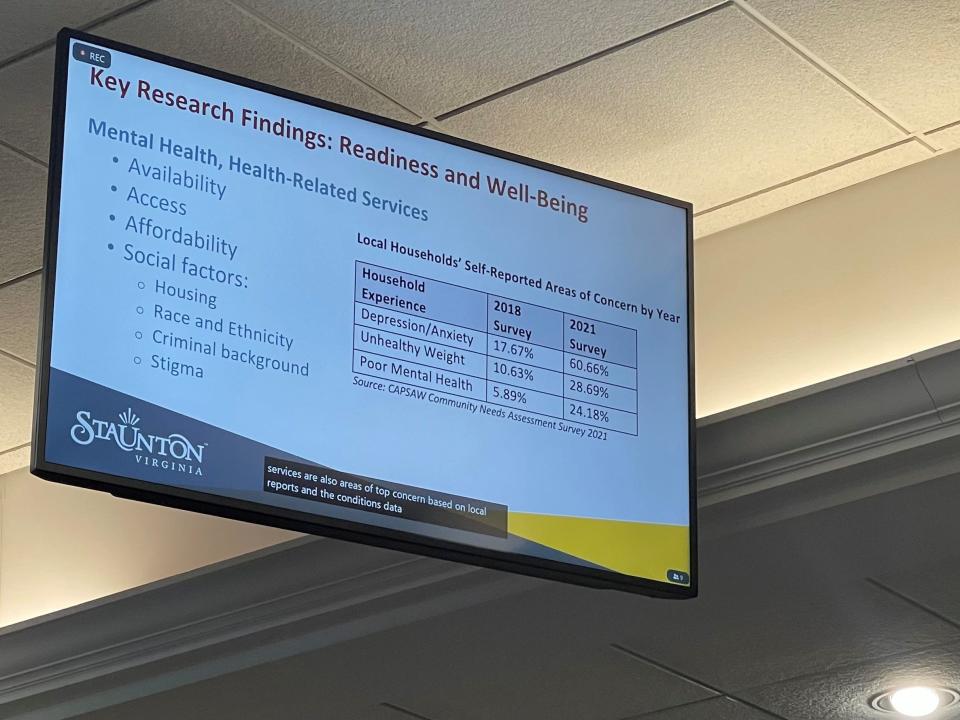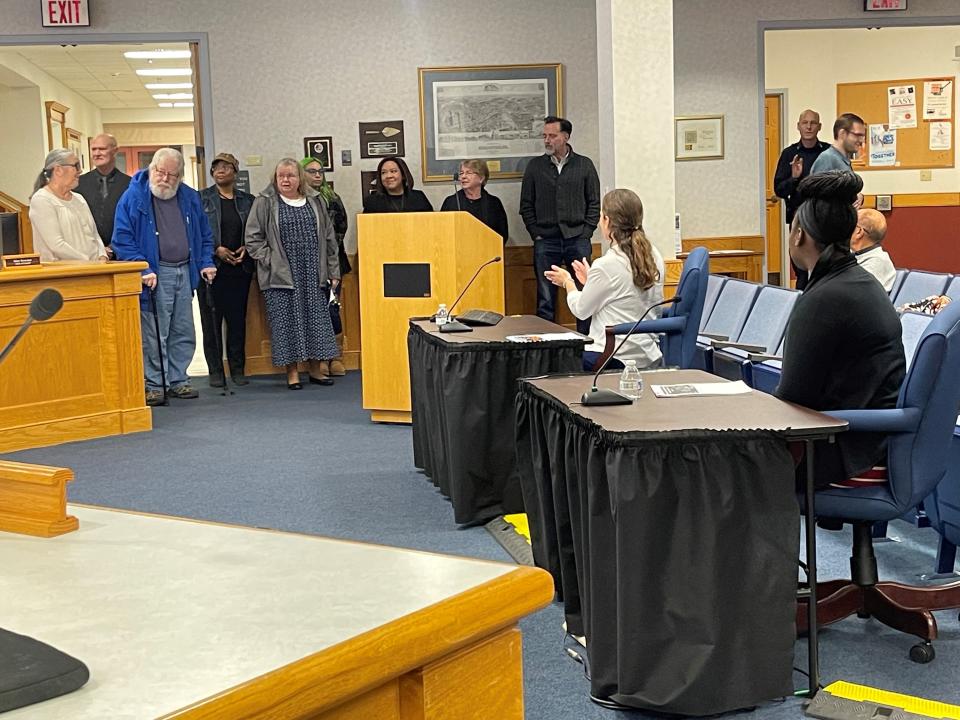Staunton DEI Commission presents findings to City Council
The Staunton Diversity, Equity and Inclusion (DEI) Commission approached the Staunton City Council to present its findings and recommendations on Dec. 14.
As previously reported by The News Leader, the commission spent the past year and a half collecting data and speaking with Staunton residents. The commission held listening sessions and interviews with many groups of Staunton residents, such as the BIPOC (Black, Indigenous People of Color) community, LGBTQIA+ community, the unhoused community, the disabled community, the elderly, and intergenerational families. In addition to the minority data, the presentation also focused on economic conditions.
The report’s data on race suggests some things are improving, but not better
As of the last census, the city's population has increased to approximately 25,000. Of these residents, 78.5 percent are white, 11.4 percent are Black, 4.2 percent are Hispanic, and 5.9 percent other races.
About one in five are under 18 years old, and another one in five are over 65 years old. Over half, about 54 percent, of residents are female. About one in three have a college diploma, and almost nine out of ten have a high school diploma. Staunton’s census data does not contain information on the local LGBTQ+ community.
According to the presentation, the Staunton school system has a disparity in the number of short-term suspensions between students of different races. According to Lindsey Lennon, Vice Chair of the DEI Commission, and the report, the city struggles to recruit and retain diverse teachers despite competitive pay compared to other nearby school districts. The other districts also seem to have the same problem.
According to data ranging from the 2020 to 2023 school years, comparative test scores between Black, White, and Hispanic are closer than they used to be. The data is calculated by dividing the percent of students that passed in one race by the number that passed in another race. Results under one mean the second race, whites, has a higher number of students passing, while results over one mean the first race, either Black or Hispanic in these data, have a higher percentage of passing students.
“You can also see that that's changing, that is getting better,” said Lennon. “Over these three years this … achievement gap is shrinking. We saw that as a positive sign.”

About six percent of businesses in the city are minority owned. This is low compared to the 20 percent minority population in the county. These business owners told the commission they need more resources, both financial and educational, and that the city’s code placed barriers around their operations. Lennon did not give examples of specific city codes.
Overall, the number of people arrested and sent to the Middle River Regional Jail (MRRJ) from Staunton has fallen. Between 2010 and 2019, the number of white inmates fell by 17 percent, while the number of black inmates fell by 31 percent.
“In each one of these years, there is still more proportionately higher rate of black intake than white intake, based on what you would expect from the numbers that are in the population,” Lennon explained. “There's still considerable resources that are needed to support then to assist in support and the rehabilitation of these populations.”

With ALICE guidelines, one in three Staunton residents live in poverty
In Diversity, Equity, and Inclusion considerations, economic accessibility is key to equity and inclusion. Because of this, the commission looked in on how well the residents of Staunton are doing financially.
The city’s median income is $53,000, with an unemployment rate of 3.2 percent. However, just because someone is employed does not mean they have enough money to survive or the health insurance to take care of health issues.
“Local reports find that many of the employment opportunities that do exist within the city were hourly and lacking suitable benefits for workers,” Lennon said. “The barriers to suitable employment are only more prevalent for those experiencing homelessness and those with criminal convictions. During conversations with the community, there was a general sense that the community lacks good paying employment opportunities and, considering the lack of viable wages, many parents are required to work multiple jobs.”
According to federal poverty data, Staunton has a 13 percent poverty rate. The DEI Commission decided to look further into these numbers, knowing that the Department of Health and Human Services federal poverty guidelines are surprising low. A single person is no longer considered to be in poverty by the federal government when they make over $14,580 a year. For a four-member household, they are no longer in poverty when they collectively make over $30,000 a year.
Instead, the commission used ALICE data. Asset limited, income constrained, employed (ALICE) poverty guidelines include people who “still struggle to make ends meet struggle to meet their most basic needs,” Lennon explained. This matches one out of three Staunton households.
After a question from council, Lennon also noted that the differences in income between Staunton and the rest of the state are due, in part, to higher incomes in the eastern and northern parts of the state. However, when compared to Augusta County as a whole, Staunton’s income is still lower.
What expenses does the average family deal with?
The need for more affordable housing and better transportation options are center to the city helping those in poverty escape it.
“Several community leaders noted transportation as an underlying issue that is interrelated with other issues addressed in this report, things like housing, mental health services, employment, childcare, and education,” Lennon explained. “Those ALICE households that I mentioned before are forced typically forced to live in lower income areas with limited community resources, which tend to be further away from jobs and services. As a result, these households often spend disproportionately more on transportation.”
Childcare is another factor increasingly making it hard for Staunton residents to make ends meet. Parents in the city can often not find childcare when they look, the limited supply already taken by other parents, and when they can find it, the financial cost is too great a burden.
“Cost for employers, to keep their employees, are going up," Lennon said. "Hourly wages are going up, but they can't increase the cost for the care as much as they have to increase wages for their employees. That doesn't bring in benefits [for the employees] either. … It's a real strain in the system where the cost of the employees is going up, but they just can't keep chasing it.”
Depression and anxiety percentage tripled between 2018 and 2021
According to the Community Action Partnership of Staunton, Augusta, and Waynesboro (CAPSAW) community needs assessment surveys from 2018 and 2021, mental health concerns are growing. Reported depression and anxiety rates skyrocketed from 17.67 percent to 60.66 percent, jumping from one out of five residents to over half of the population.

This striking number would lead anyone to ask what has gone wrong.
“The year of COVID, and the years that followed,” Buress explained. “There is a lot of data around the ways that it impacted our mental health and wellness.
Buress also seemed optimistic about the increase, saying “there may be some difference in the folks that reported in 2018, versus that reported in 2020. From a mental health professional [standpoint, this] is a really great thing, because it means that they're actually acknowledging that that help is needed.”
Before the situation improves, once again there are economic problems that must be solved.
“The first issue is simply availability of care,” Lennon said. “Plainly, we don't have enough physicians. We don't have enough mental healthcare workers. … [Second], affordability, obviously, that's a class issue, but also an issue related to health insurance and out-of-pocket costs. … There are also links between race and ethnicity and mental health and health outcomes.”
What can the city do?
As explained by DEI Commission Chair Sabrina Burress, the goals include:
A long-term DEI commitment. Actions include hiring or naming a DEI officer position [or] implement a permanent DEI commission consisting of diverse community members to assist with community building, accountability and ongoing data collection, synthesis and integration.
The promotion of diversity, equity, and inclusion in city policies, procedures, and staff representation.
The promotion and modeling of DEI values in the community and broader region. The desired outcome is to increase community engagement and foster a stronger sense of belonging.
The creation of more increased opportunities for residents to gain and sustain economic vitality. City actions would include increasing the amount of affordable housing and public transportation, including more non-car options, and promoting minority-owned businesses.
Focusing on community wellbeing with more attention on vulnerable residents. This broad ranging goal includes building community awareness of the diverse lived experience of Staunton residents. It also points to building more health programs, both physical and mental.
Council agrees – this is a good start
“I thought it went well,” Buress told The News Leader after the meeting. “We were all really nervous, obviously, but sticking to the data [is] important. What we presented was exactly what we found. … I think it was really well received. Council asked some really great questions. Questions means they’re interested.”
A round of applause was held and each commission member approached the podium to introduce themselves. The commission includes Burress, Lennon, Lou Boden, Joamarie Garcia, Mark Jeter, Vicki Keyser, Jake Krug, Beth Nelsen, AnhThu Nguyen, Nathaniel Riddle, Daniel Stuhlsatz, Jennifer Trippeer, Susan Venable, and Zavia Willis.

Several councilmembers vocally supported the report after it was presented.
“What excites me about this is the breadth and depth of the population that you were able to speak with,” said Councilmember Michelle Edwards. “It is the perennial problem. … One of the most exciting things that the DEI commission could do moving forward is to be a liaison between local government between different sections of society and actually bring people together who don't normally end up in the same room together. Those things just don't naturally happen, unless you're in public school.”
“I just want to commend you,” said Adam Campbell, the city’s newest councilmember. “I'm still digesting it. … This is a very impressive document, in terms of format and layout to make this data approachable. The classification and ordering of the goals and action items easily relate back to that supporting data.”
This article originally appeared on Staunton News Leader: Staunton DEI Commission presents findings to City Council

